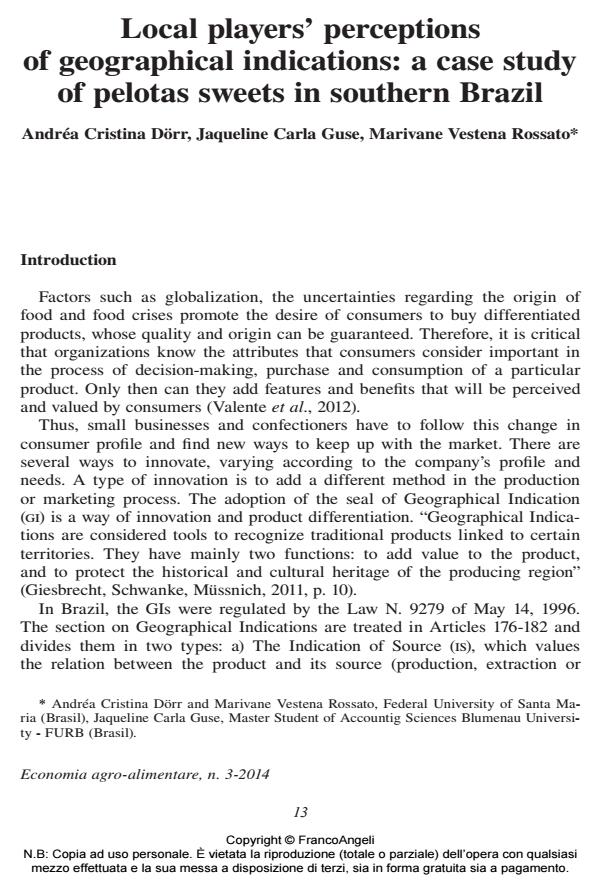Local players’ perceptions of geographical indications: a case study of pelotas sweets in southern Brazil
Journal title ECONOMIA AGRO-ALIMENTARE
Author/s Andrea Cristina Dorr, Jaqueline Carla Guse, Marivane Vestena Rossato
Publishing Year 2014 Issue 2014/3
Language English Pages 13 P. 13-25 File size 170 KB
DOI 10.3280/ECAG2014-003003
DOI is like a bar code for intellectual property: to have more infomation
click here
Below, you can see the article first page
If you want to buy this article in PDF format, you can do it, following the instructions to buy download credits

FrancoAngeli is member of Publishers International Linking Association, Inc (PILA), a not-for-profit association which run the CrossRef service enabling links to and from online scholarly content.
The adoption of a Geographical Indication (gi) represents, among other things, a way of innovation and market advantage. As only a few, relatively recent studies have investigated this topic in Brazil, this research aims to verify the historical, cultural and economic perceptions of consumers and producers involved in the production chain of Pelotas sweets in relation to the adoption of gi. The case study was investigated through field research with primary data collection from 138 consumers and three case studies with producers who participated in the 21st fenadoce fair, in the city of Pelotas-RS, between May 31st and June 2nd, 2013. The findings reveal that consumers identify the Pelotas gi with the region of Pelotas. Pelotas gi sweets are recognized by consumers thanks to their alluring appearance, smell, taste and texture. We conclude that consumers have become more convinced about consuming a product which maintains the characteristics of its original recipes and, more than anything, the unmistakable flavor of Pelotas sweets.
Keywords: Geographical Indication, Pelotas Sweets, innovation
Jel codes: Q13, Q17, D12
Andrea Cristina Dorr, Jaqueline Carla Guse, Marivane Vestena Rossato, Local players’ perceptions of geographical indications: a case study of pelotas sweets in southern Brazil in "ECONOMIA AGRO-ALIMENTARE" 3/2014, pp 13-25, DOI: 10.3280/ECAG2014-003003